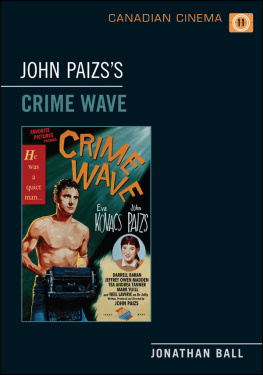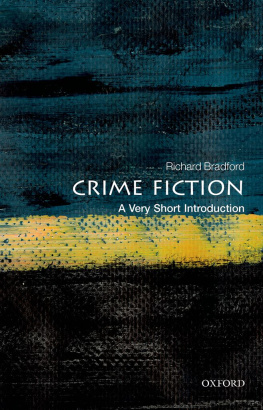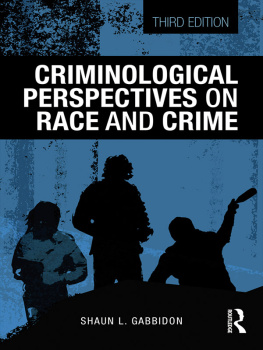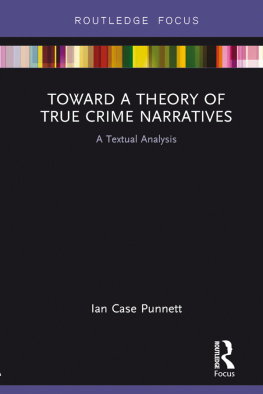Originally published in the Media Studies Journal, Winter 1992. Copyright 1992 by The Freedom Forum Media Studies Center and The Freedom Forum.
Published 1995 by Transaction Publishers
Published 2017 by Routledge
2 Park Square, Milton Park, Abingdon, Oxon OX14 4RN
711 Third Avenue, New York, NY 10017
Routledge is an imprint of the Taylor and Francis Group, an informa business
Copyright 1995 by Taylor & Francis.
All rights reserved. No part of this book may be reprinted or reproduced or utilised in any form or by any electronic, mechanical, or other means, now known or hereafter invented, including photocopying and recording, or in any information storage or retrieval system, without permission in writing from the publishers.
Notice:
Product or corporate names may be trademarks or registered trademarks, and are used only for identification and explanation without intent to infringe.
Library of Congress Catalog Number: 95-7674
Library of Congress Cataloging-in-Publication Data
The culture of crime / edited by Craig L. LaMay and Everette E. Dennis.
p. cm.
Includes bibliographical references and index.
ISBN 1-56000-826-1
1. Crime in mass mediaUnited States. 2. Mass mediaSocial aspects
United States. 3. Mass mediaUnited StatesPsychological
aspects. I. LaMay, Craig L. II. Dennis, Everette E.
P96.C74C85 1995
364.10973dc20
95-7674
CIP
ISBN 13: 978-1-56000-826-2 (pbk)
For generations, critics of the press have had one consistent complaint: too much crime in the news. As they decry the emphasis on the lurid and the sensational, they keep coming back to crime, saying that it is the essence of bad news and is largely responsible for the negative slant of the press on almost everything. Serious students of news agree that news does have a negative coloration and that the medias historic love affair with crime, criminals and criminal behavior is largely responsible. At the same time, media scholar Harold Lasswell argues that one of the principal functions of the mass media is surveillance of the environment, which means giving people clues about the nature of the communities in which they live and whether or not they are safe.
One of the earliest collections of newspaper reportage, John Wights Mornings at Bow Street (1824), provided a glimpse of the English courts as they adjudicated disputes, many of them involving crimes great and small. In America, the growth of crime coverage coincided with the penny press of the 1830s. These popular newspapers were sold to the masses for a single penny and often contained accounts of crimes ranging from murder to petty theft. The publishers believed, and rightly, that ordinary people would be more interested in crime than in high finance or foreign policy. Crime or unlawful activity was thought to be more immediate and closer to peoples daily lives than the pronouncements of a foreign minister, for example. With the growth of cities, crime in America, at least, became more rampant and more vital to peoples existence, although one could argue that the presss preoccupation with crime conditioned the public to expect a violent society and perhaps even made people believe that life was more dangerous than it actually was.
Crime and criminal activity are linked to the function of criminal law, which has been defined by the Directory of the Social Sciences as follows:
to preserve public order and decency, to protect the citizen from what is offensive or injurious, and to provide sufficient safeguards against exploitation and corruption of others, particularly those who are specially vulnerable because they are young, weak in body or mind, inexperienced, or in a state of special physical, official or economic dependence.
At the same time, crime has helped shape the modern definition of news, because news usually involves conflict and whatever is bizarre, sensational or deviant; and crime clearly is deviant behavior.
Crime is a staple of the modern media, as shown by the attention given to celebrated trials involving famous people. For example, one of the most seminal trials that shaped news coverage (and media criticism) was that of Bruno Richard Hauptmann, who was tried and convicted of kidnapping and murdering the son of aviator Charles Lindbergh in the 1930s. In the 1950s, the trial of Dr. Samuel H. Sheppard, an osteopath in Cleveland, Ohio, similarly rode on a wave of sensational reporting, much of it later deemed deleterious by critics and courts alike. That trial, along with one that never occurredthat of Lee Harvey Oswald, who was accused of assassinating President John F. Kennedy but killed within hours of his arrestled to a national discussion of the issue of press versus fair trial, pitting the rights of the media and the public under the First Amendment against those of the defendant under the Sixth Amendment to the Constitution of the United States. Again, after much hand-wringing, codes of conduct for court officers and journalists were agreed upon, and more than 30 states organized fair trial-free press committees.
While most of the constraints on the media were voluntary for a time, the rules seemed to work pretty well. Still, First Amendment attorneys worried that even voluntary rules could be made mandatory by courts if they chose to define appropriate and proper journalistic standards. In time, that is exactly what happened, and the genteel agreements among court officers, lawyers and journalists broke down by the early 1980s.
Then in 1994, what may be the most celebrated criminal case in modern American history emerged when former football star, actor and television personality O.J. Simpson was accused of murdering his ex-wife, Nicole, and her friend, Ronald Goldman. Massive media coverage preempted even soap operas, and the nation was captivated. In an age when TV cameras are allowed in most trial courtrooms, the public got both a close look at legal proceedings and considerably more feedback from reports outside the courtroom. Tabloid sensationalism about the case mounted, causing the judge in the case, Lance Ito, to try to shield potential jurors from what he thought was contaminating publicity.
Today, some critics assert that the media system is out of control and that courts and laws are unable to influence how they and their activities are perceived in society. This is probably true, but at the same time, the principle of open courtrooms and freely accessible information seems to take precedence over constraints on the media. And it also might be argued that even in the O.J. Simpson case, it was possible for discerning readers and viewers to get a wide range of high-quality information, as well as the more scurrilous and sensational.
What the O.J. Simpson case indicated, though, was the durability and continuing importance of crime coverage in America and elsewhere. Crime is a topic of universal appeal and ultimately makes a statement about the nature of the society itself. In the 1990s, however, it became clear that media coverage of crime was often misleading not in detailing specific cases but in giving the overall impression that crime was on the rise when, in fact, various statistics indicated that the number of violent crimes actually decreased in many metropolitan areas. Crime is often the focal point of elections and politics, with office seekers arguing that they will be tougher on crime than their opponents will. Covered without context, such claims often cloud full public understanding of crime and criminal activity.









